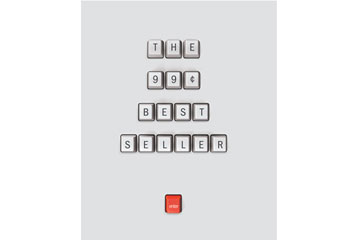
(7 of 8)
Few writers, though, can match Andre's superhuman drive. The publishing industry may be cruel to outsiders. But to those it invites in, it offers comforts, including a degree of insulation from the risk of failure. Most books lose money: the rule of thumb is that the one in 10 that becomes a hit pays for the nine that don't. But authors generally get to keep their advance regardless, meaning that in the vast majority of cases, they come out modestly ahead even if their book bombs. With self-publishing, writers can earn larger royalties, but Amazon takes no share of the risk; 70% of zero sales equals zero profit.
As new authors have overrun the self-publishing marketplace, some have turned back to traditional publishers. Amanda Hocking, one of the first indie writers to sell more than a million books, signed a $2 million deal with St. Martin's Press and has written on her blog about the joys of delegating marketing and promotion. After Fifty Shades built its popularity through word of mouth among suburban moms, a Random House imprint snapped up James with a seven-figure contract, put paperback editions in every airport bookstore and sent her on a publicity tour.
A few months after we met, Andre announced that the publisher Harlequin had paid her more than $1 million to publish a seven-book series in paperback--a deal that she said made "perfect sense" because it allotted her the digital rights while allowing her to reach the still huge print readership for romance. While Andre says she's still committed to self-publishing, even some of the most fervent indie proponents confess that they are nervous about their long-term security. "I'm really wondering where we're going to be 18 months from now," says Bob Mayer, who claims he sold 600,000 copies of his military novels last year. "If it happened so quickly, it can unhappen." Even Konrath has hedged his bets, by signing a contract to publish some of his novels via a new Amazon-run publishing imprint. "When Amazon pushes a book," he says, "the book excels in ridiculous numbers."
For all the indie movement's aspirational rhetoric, the chances of succeeding at self-publishing are just as daunting as the odds of being discovered in the slush pile. If anything, the chances of publishing that rare blockbuster grow more remote every day as more stories flood into the market, competing for a finite amount of reader attention. You can glimpse the harsh truth in countless posts on indie message boards, lamenting low sales. Or you can see it in a graph that Coker prepared, analyzing the top 50,000 Smashwords titles. It looks like a nearly perfect L, with only the tiniest sliver selling more than a handful of copies.
